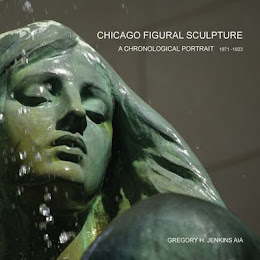The transition of Chicago's figural sculpture from Neo-classical to Deco is iridescent. Representing a level of style and creativity not seen before in this City on the River. By the Lake. It also represents a "final flaring."
.
The combination of Depression and War would forever change sculpture in Chicago. After a long twenty five years, when the City finally began to rebuild itself, this would be the art left behind. And so, for me, at once, Deco is very beautiful and very sad. These figures grace the elevator doors at 333 North Michigan Avenue. When it was briefly possible (yet thoroughly modern) to understand the centuries old vocabularies of Apollo and Diana.
I wonder what we might lose this time.
FOR MORE CHICAGO ARCHITECTURE, SCULPTURE AND PHOTOGRAPHY VISIT
.



























































